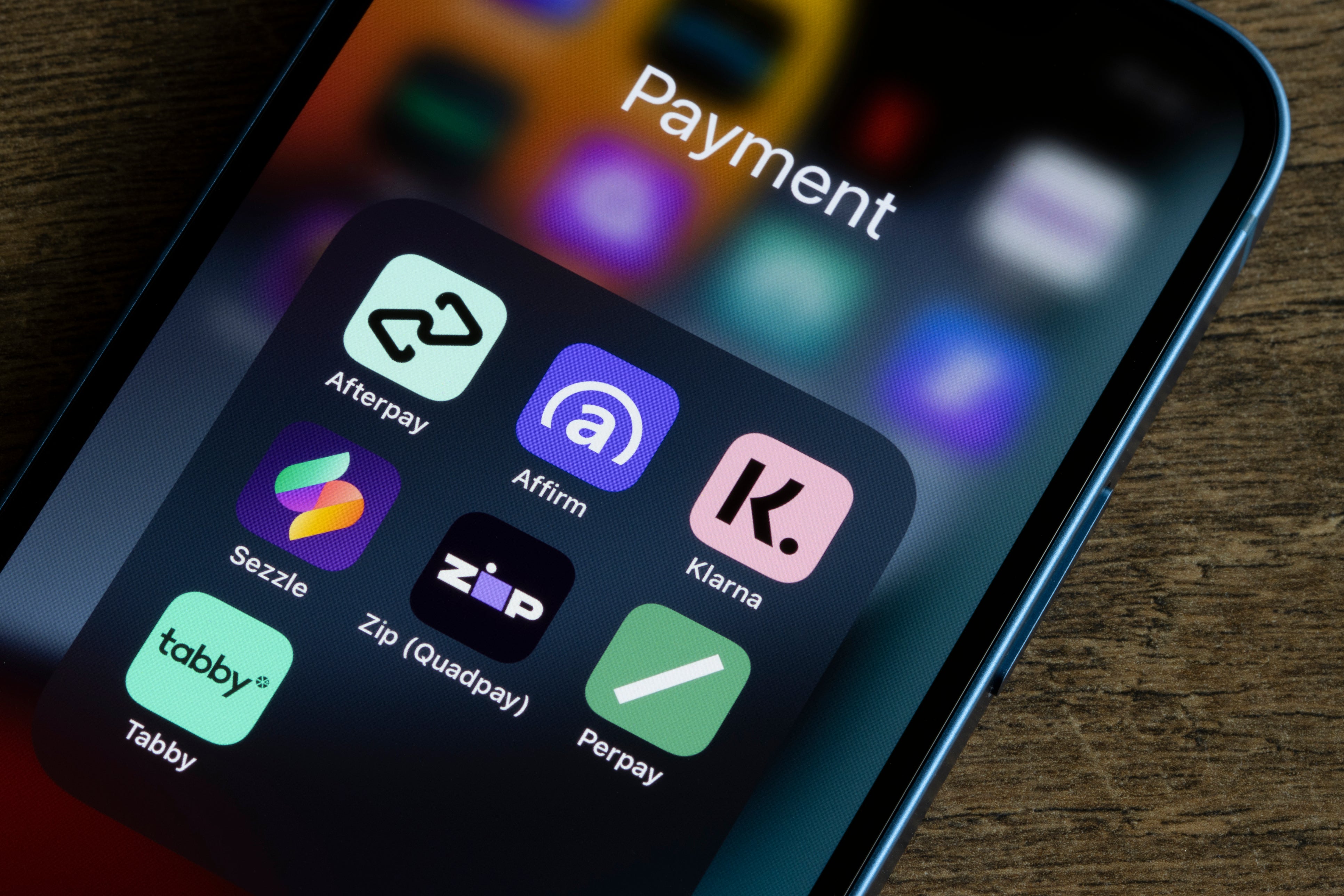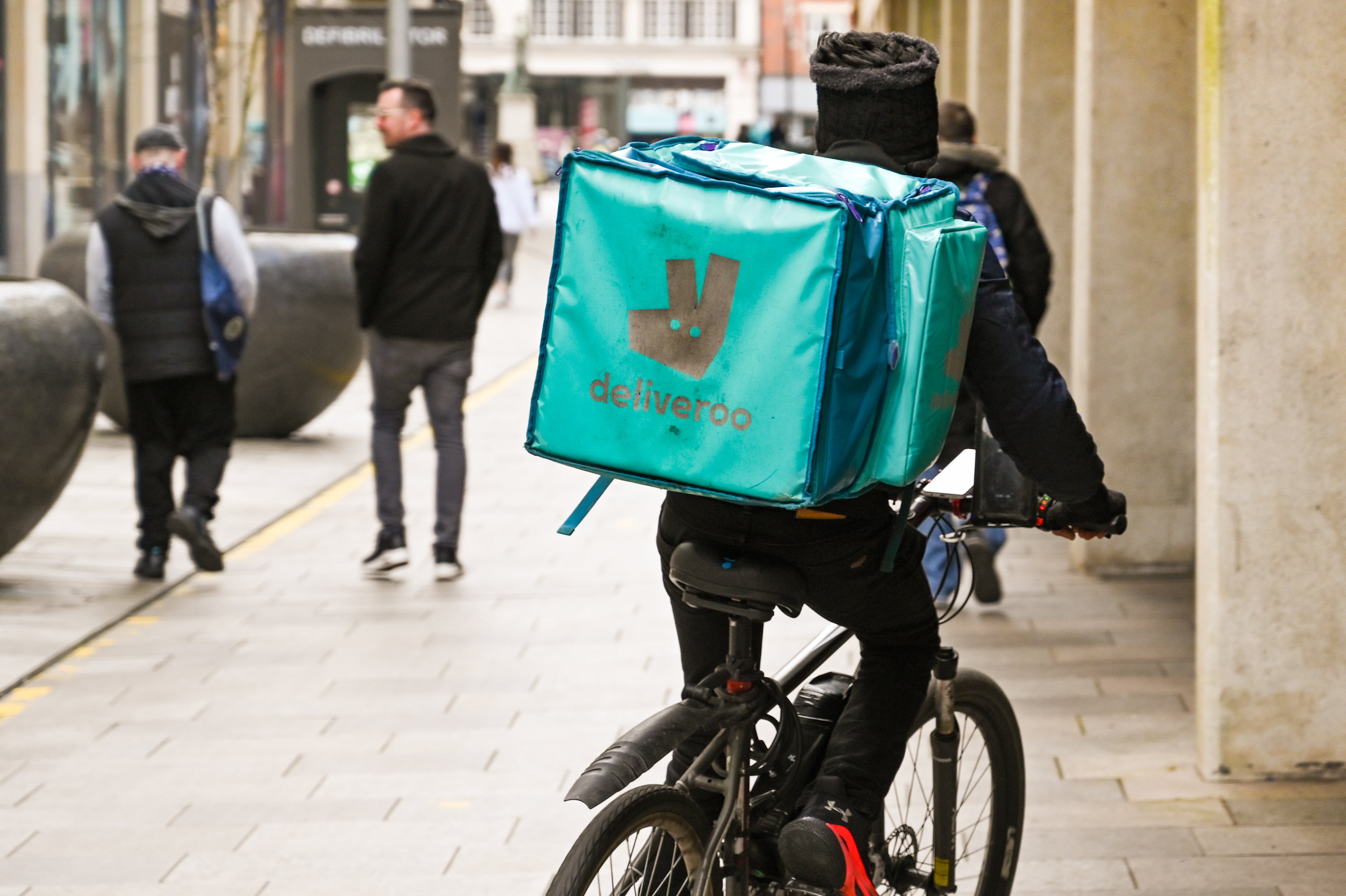I can’t stop using Klarna to buy now and pay later – and I’m suffering the consequences
You may have paid off your car via three instalments, but what about your Friday night takeaway? Ellie Muir found herself hooked on using ‘Buy Now Pay Later’ services and in a constant cycle of payment deadlines she couldn’t afford


You will have seen its baby pink logo, placed seductively at the bottom of the checkout window. Today it’s ubiquitous, lurking on practically every online shop, from Asos to Deliveroo and John Lewis. I avoided clicking it for a while, then eventually gave in: this is Klarna, one of the many buy now, pay later (BNPL) services that allow you to split payments for everyday items into three, zero-interest instalments, or pay within 30 days. Sounds like a perfect way to create some financial flexibility, right? That’s until you get completely hooked.
It began when I needed a dress for a special occasion, but couldn’t afford one until payday. So I opted to actually pay for it 30 days after purchase. I was amazed by how easy it was. I didn’t have to jump through any major hoops to obtain the credit from Klarna, or fill out any lengthy forms. But then I got trigger-happy.
Gym trainers, a pair of headphones, a cute winter cardi – you name it, I’ve probably Klarna’d it. Just last week I decided to buy a ticket for a European music festival in nine separate instalments. I’ve somehow become allergic to paying for anything outright. But, when it’s time to pay up, I continually find myself struggling to balance my multiple payment deadlines. I’ve been living beyond my means and I know I’m in a dangerous cycle. But why has this kind of payment culture become so normalised?
As it turns out, I’m not alone in my reliance on Klarna. BNPL services have become commonplace in the digital shopping sphere: Klarna alone has more than 85 million users, and Gen Zs and millennials are its biggest clientele. If you thought of buying something in instalments a decade ago, it might be to pay off a car, or a new sofa. During the pandemic, though, BNPLs became more widely used on far smaller purchases. You can use Klarna in the online stores of Boots, JD Sports and H&M. You can even pay for your Friday night takeaway in three instalments, since Klarna is available on Uber Eats and JustEat.
Launched in Sweden in 2005, Klarna had ambitions of becoming a simple online money transfer app along the lines of PayPal. Klarna now serves more than 500,000 merchants in 26 countries. It follows in the footsteps of Australian company Afterpay and its UK brand Clearpay, which can lend you a fixed amount of credit so you can pay for your purchase over four instalments, due every two weeks.
The appeal of using BNPL schemes is that they are zero-interest, unlike traditional forms of credit. Another upside is that these services feel relatively unserious; the language used by the companies seems friendly and non-threatening. Even when I’ve missed a payment or two in the past, the notification reminders from Klarna have felt like polite nudges rather than scary letters from the bank. But, just like borrowing money from any lender, there are real consequences when you miss a payment: you’ll be charged a late fee and your credit score will be affected.

When I speak with Professor Alexandru Barbu, a lecturer at global business school INSEAD and an expert in household finance, he tells me that companies like Klarna previously didn’t report to credit scoring agencies – they’re starting to now voluntarily. “There’s been this belief that you can default on [BNPLs] and that it wouldn’t affect your credit score. Klarna and all these providers did not have to report to credit bureaus or any big credit scoring agencies, but now, increasingly, they do – meaning that if you miss a payment, it’ll affect your access to other types of credit and your credit history.”
But how do these companies actually make money? While Klarna is free for the consumer to use, Barbu explains that it will charge the merchant a fee per transaction, usually between three and six per cent. “But you have to ask yourself, why is the merchant willing to do that?” says Barbu. Merchants integrate services like Klarna into their online stores because it may encourage the consumer to buy more products in one transaction if they can spread the cost over time. For example, if you visited Asos to buy a T-shirt, but then realised you could use Klarna to pay instead, you might decide to buy a pair of jeans, too. And maybe that handbag you’ve had your eye on for a while. You don’t have to pay for all of it until the following month, so why not? Klarna is essentially the middleman in encouraging you to buy more. “The underlying goal is the consumer spending more with that merchant by using Klarna,” Barbu says. “It’s a big thing in the incentive structure.” It’s all about making money.

What worries me is that the marketing around BNPLs feels specifically targeted to young people, who inevitably earn less money than their elders. According to analysis from financial research site Finder, seven in 10 Gen Zs and millennials have used BNPL services at some point, while it’s more like three in 10 among their parents’ generation. The marketing language used by both Klarna and Clearpay is inherently youthful, too. The tone is easy-breezy, with attractive images of the goods that you could own, alongside group shots of twentysomethings smiling together. It’s not dissimilar from a campaign you’d see plastered on the walls at a university open day. This flowery marketing further fuels the idea that it’s a less serious version of credit.
It’s also a psychological thing. For me, using Klarna allows me to reap the dopamine boost I get from retail therapy, all without the financial guilt of spending the money in one big go. Tom South, director of organic and web at Epos Now, a company that provides retailers with physical checkout tills and payment systems, tells me that the appeal of BNPLs feeds into psychological pricing, which has become crucial towards generating more sales during a cost of living crisis. By lowering the up-front cost at the checkout, people are more ready to buy the item. “Consumers are drawn to the lower up-front payments of BNPL at checkouts, and Imperial College Business School studies have suggested that customers feel less constrained by multiple payments,” he explains.
However, this is an easy way to get lulled into debt. “The BNPL boom can be harmful to consumers drawn in by the prospect of lower upfront costs,” says South. “And without sufficient forecasting, they could find themselves compounding payments into future months in a way that could encourage a cycle of debt.”
The challenge now will be to understand how these technologies will be used, and how some groups of people get exploited
While these companies are transparent about your upcoming payments, and have well-designed apps to let you stay on top of approaching due dates, you can lose track if you’re paying off multiple purchases at once. Antonia Medlicott, a personal finance expert and CEO of Investing Insiders, agrees that it’s easy to let things get out of control. “Multiple instalments could create financial strain and missed payments can attract fees, resulting in spiralling debt,” she warns. “Small instalments building up on multiple purchases can quickly start to snowball.”
A spokesperson for Klarna said: “Klarna offers interest-free, short-term credit with structured repayment plans, clear repayment dates and eligibility checks on every purchase. We restrict the use of our products after missed payments to stop debt accumulation. Unlike traditional credit cards, our products are designed to protect against overspending, with additional features like in-app budgeting tools, and the option to deactivate credit options directly through the app.”
Professor Barbu thinks that BNPL services are a financial innovation that won’t be going anywhere. “The challenge now will be to understand how these technologies will be used, and how some groups of people get exploited,” he says. “And to design an educational campaign that will limit that.” It’s not all dark, he assures me. “There are good uses – the problem is where people also get hurt.”
It’s worrying, then, that this new and accessible payment option has quietly entered into our daily lives, but with little education around it. I can hold my hands up and admit to my financial recklessness. It’s not Klarna’s fault. But if there’s little support to help people understand the real consequences of missing payments, many of us might find ourselves sleepwalking into debt. Take it from me… I learnt the hard way.
Join our commenting forum
Join thought-provoking conversations, follow other Independent readers and see their replies
Comments
Bookmark popover
Removed from bookmarks